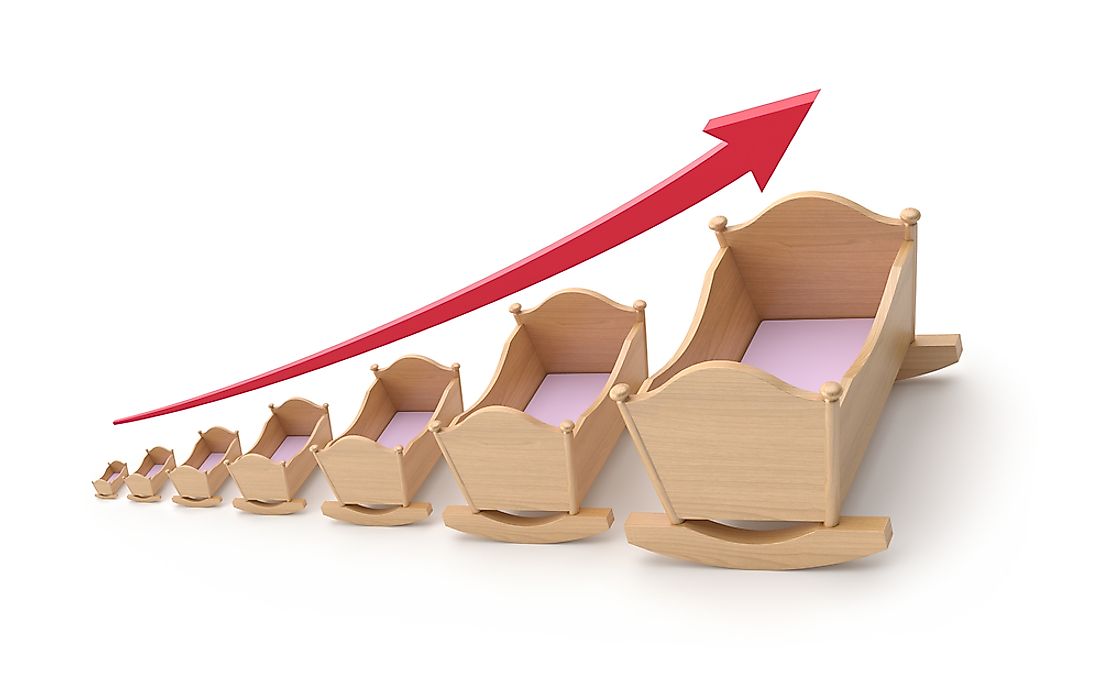

The global population has increased two folds in the past half a century to the current 7.6 billion. About 360,000 thousand births are reported every day which translates to about 15,000 per hour, 250 per minute, or 4 births in every second. By 2070 the global population would have risen to about 9 billion and is expected to then begin to fall as the fertility rate dwindles and people shun the idea of raising children. By 2100 the predicted population will have dropped to 8.4 billion.
Several factors affect the population, among them is the average number of children that can be born in a particular society, also known as the fertility rate. From the fertility rate, the birth rate or the number of children born in every one thousand people is then determined. Finally, the number of live births regardless of the gender, or the crude birth rate is determined. The crude birth rate is calculated as a ratio, for example, if 15,000 children are born in a population of 1000,000, then the crude birth would be 15/1000.
To find the change in population, the crude death rate or the number of deaths in every one thousand people is subtracted from the number of births in every one thousand people. When the figure is positive then the population is increasing, a negative value means there is a population decline.
The global crude birth rate as of 2015 was 19.08 compared to 36.11 in 1963. However, the crude birth rate fluctuated heavily with Niger reporting 48 live births in every 1000 people, while Portugal, Monaco, and Japan reported low figures of 8. Crude Birth Rates of 30 and above are considered high, while those below 18 are considered low. African countries reported high rates due to the high fertility rate among women in Africa. The Crude Birth Rate in the United States halved from 24 in 1963 to 12 in 2015. The same trend was witnessed in several other countries globally. The change in population in Japan is unique; the crude birth rate is low. The older population is on the rise while the young population is decreasing. It is estimated that by 2050 Japan will import half its labor force. By 2050 the crude birth rate is expected to drop to about 13.4 compared to 37.2 reported in 1950.
The Crude Death rate is used to determine the number of deaths reported in every 1000 people in a year. As at 2015, the average global Crude Death Rate stood at 7.64 compared to 17.63 in 1960. Improved health care, better living conditions, and advancements in medical practices are some of the factors attributed to the significant drop. Serbia and Ukraine reported the highest Crude Death Rate of 15 while Bahrain reported a Crude Death Rate of only 2.
| Rank | Time Frame | CBR |
|---|---|---|
| 1 | 1950-1955 | 37.2 |
| 2 | 1955-1960 | 35.3 |
| 3 | 1960-1965 | 34.9 |
| 4 | 1965-1970 | 33.4 |
| 5 | 1970-1975 | 30.8 |
| 6 | 1980-1985 | 28.4 |
| 7 | 1985-1990 | 27.9 |
| 8 | 1990-1995 | 27.3 |
| 9 | 1995-2000 | 24.7 |
| 10 | 2000-2005 | 22.5 |
| 11 | 2005-2010 | 21.2 |
| 12 | 2010-2015 | 20.3 |
| 13 | 2015-2020 | 19.4 |
| 14 | 2020-2025 | 18.2 |
| 15 | 2025-2030 | 16.9 |
| 16 | 2030-2035 | 15.8 |
| 17 | 2035-2040 | 15 |
| 18 | 2040-2045 | 14 |
| 19 | 2045-2050 | 13.4 |